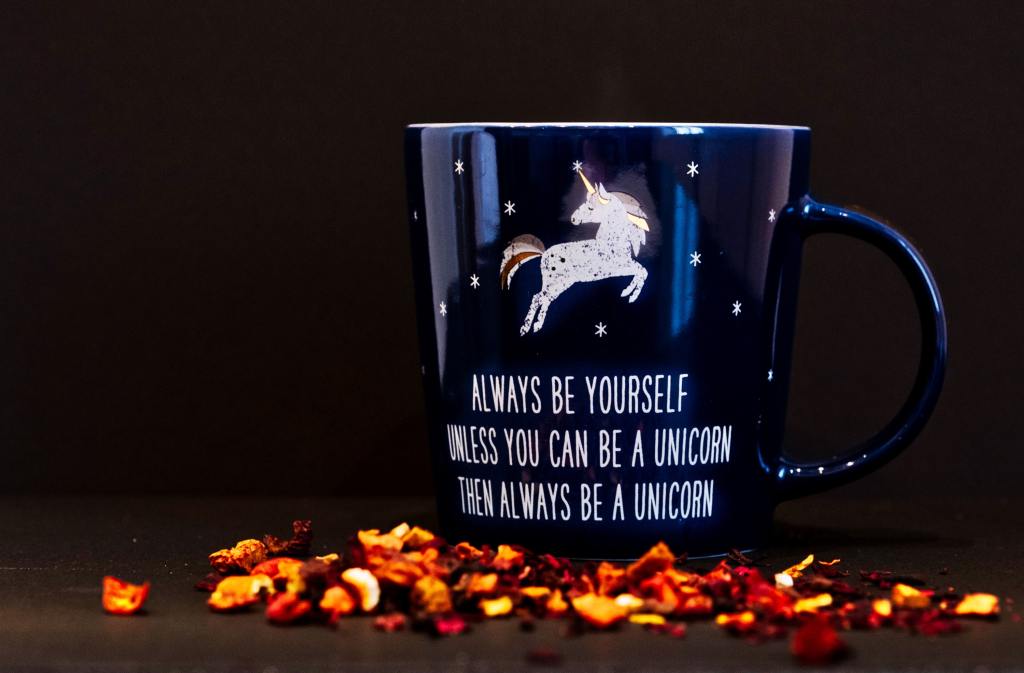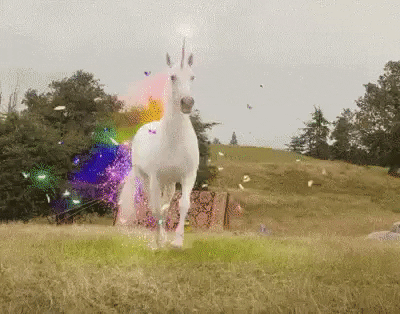
Can I just say that I need that mug? I don’t know what I’d use it for since I don’t drink coffee or tea, but I sure do need it.
Welcome, ladies and gents (are there any gents here? I’m not sure) to the third installment in this lovely series. I now officially have a collection of “The Science of Magic” posts.
I’m not sure if that’s good or bad.
Today we are covering a topic that has been suggested (read: demanded) by my friend since the first Science of Magic went live. UNICORNS!!!

Is that GIF from a movie? I don’t know. I found it on Google. ALL HAIL THE MIGHTY GOOGLE
*ahem* This is what happens when I write a post last minute. 😅
Well, without further ado, let’s begin!

Hmm….unicorns…..it’s going to be pretty hard to find something wrong with them, because….they’re actually pretty solid by ways of anatomy and stuff. And since they’re fantasy, magic is acceptable.
(That’s my motto. If it has anything to do with fantasy, magic is acceptable. Or asseptable, as I like to say)
Let’s start out like we normally do with a little bit of background about these wonderful horses.
Unicorns most likely originated in the Indus River Valley Civilization, as carvings of something like “horned seals” have been found in the region. The ancient Greeks believed unicorns to live in India, with horns 28 inches long. They were said to be fleet of foot and colored red, white, and black.
Stories and carvings of unicorns have been found in many places, such as Persia, England, and France.
In the middle ages, unicorns were said to be tamable, but only by a young virgin woman. Marco Polo described them as, “scarcely smaller than elephants. They have the hair of a buffalo and feet like an elephant’s. They have a single large black horn in the middle of the forehead… They have a head like a wild boar’s… They spend their time by preference wallowing in mud and slime. They are very ugly brutes to look at. They are not at all such as we describe them when we relate that they let themselves be captured by virgins, but clean contrary to our notions.”
(He was talking about a rhino)
As the years passed, unicorns became more and more popular. The Scots believed them to be the natural enemies of lions, and unicorns were used all over English coats of arms.
Unicorns have also appeared in Chinese mythology and some people believe they have appeared in the Bible (although I didn’t research that in detail)
Now, on to me being critical about unicorns.
….
Uh…..
This is kind of weak, but I do have a problem with the fact that most unicorns are described as swift-footed. If that were so, the unicorn in that GIF up there would have rounder legs and a smaller stomach.

Yeah, this post is kind of weak. But hopefully you learned something about unicorns. I was on a bit of a time crunch when I wrote it, so…yeah.
Thanks for reading!!


Wow, I didn’t know I could learn so much about unicorns! XD I laughed really hard at Marco Polo’s [supposed] prediction of a unicorn. Lol
LikeLiked by 1 person
THANK YOU!!!! I LITERALLY SQUEALED WHEN I SAW THIS IN MY INBOX!!!! BEAUTIFUL JOB I LOVE IT!!!!
….anyway. I have a bit of a problem.
LikeLiked by 2 people
Also, there’s a fair number of unicorn mentions in the Bible (mostly in KJV for reasons unknown to me). I looked it up and there’s some unicorn verses in Numbers, Deuteronomy, Psalms, Isaiah and Job. Turns out that they sometimes translated “wild ox” as “unicorn,” I HAVE NO IDEA how you get unicorn out of wild ox. (Maybe it goes along with the Marco Polo thing??) Cool topic to research! Thanks for making my day happier 🙂
LikeLiked by 2 people
You’re very welcome! I promised you a unicorn post, and I gave you a unicorn post XD
LikeLike